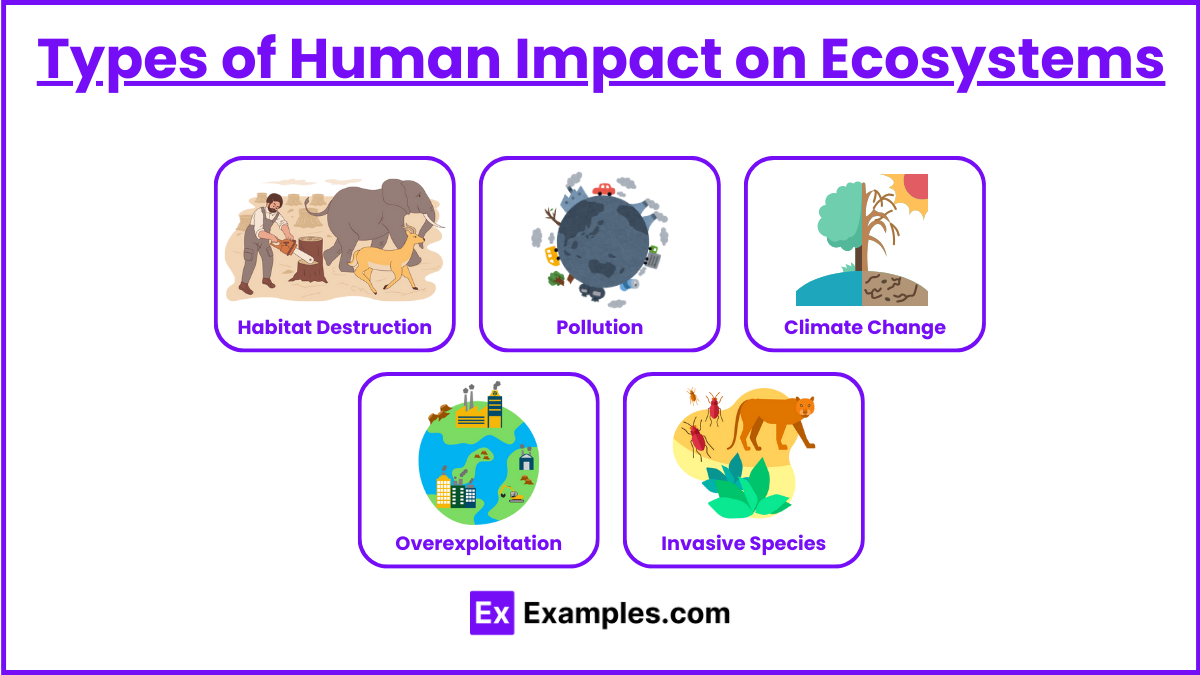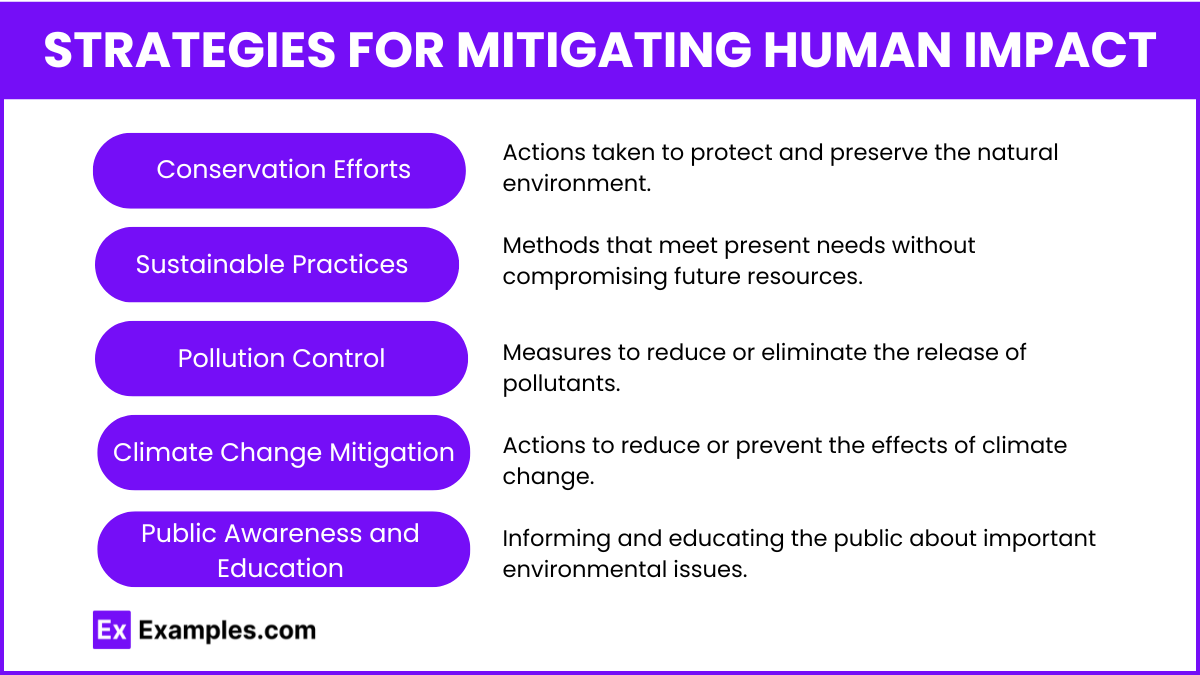Human impact on ecosystems is a critical topic in AP Environmental Science, exploring how human activities disrupt the biosphere, affecting ecology, ecosystems, and biodiversity. From deforestation and pollution to climate change and overexploitation, humans alter natural processes, leading to habitat loss, species extinction, and ecosystem imbalances. Understanding these impacts is essential for developing sustainable practices to protect and restore our planet's ecological health and biodiversity.
Free AP Environmental Science Practice Test
Learning Objectives
By studying human impact on ecosystems, students will learn how human activities affect organisms, alter flora and fauna, and contribute to climate changes. Learning objectives include understanding the consequences of habitat destruction, pollution, and overexploitation on biodiversity, analyzing the effects of climate changes on ecosystems, and exploring conservation strategies. This knowledge equips students to evaluate human actions and develop sustainable solutions to protect organisms and maintain ecological balance.
Types of Human Impact on Ecosystems

Habitat Destruction
Causes:
Deforestation: Clearing forests for agriculture, logging, and urban development.
Urbanization: Expanding cities and infrastructure reduce natural habitats.
Agriculture: Converting natural landscapes into farmlands.
Mining: Extracting minerals disrupts land and ecosystems.
Effects:
Loss of biodiversity as species lose their natural habitats.
Disruption of ecological processes like pollination and seed dispersal.
Increased soil erosion and decreased soil fertility.
Pollution
Types:
Air Pollution: Emissions from factories, vehicles, and burning fossil fuels release harmful substances like CO₂, SO₂, NOₓ, and particulate matter.
Water Pollution: Industrial discharges, agricultural runoff, and untreated sewage contaminate water bodies with chemicals, heavy metals, and pathogens.
Soil Pollution: Use of pesticides, herbicides, and industrial waste leads to soil contamination.
Plastic Pollution: Non-biodegradable plastics accumulate in oceans and landfills, harming wildlife.
Effects:
Acid rain from air pollution damages forests and aquatic ecosystems.
Contaminated water affects aquatic life and human health.
Soil degradation reduces agricultural productivity.
Plastics harm marine life and disrupt food chains.
Climate Change
Causes:
Greenhouse Gas Emissions: Burning fossil fuels, deforestation, and industrial processes release CO₂, methane (CH₄), and other greenhouse gases.
Deforestation: Reduces the planet's capacity to absorb CO₂.
Effects:
Global warming leads to melting polar ice, rising sea levels, and altered weather patterns.
Ocean acidification affects marine ecosystems and coral reefs.
Changes in temperature and precipitation patterns impact species distribution and ecosystem dynamics.
Overexploitation
Causes:
Overfishing: Depletes fish populations and disrupts aquatic food webs.
Hunting and Poaching: Reduces populations of targeted species.
Logging: Unsustainable timber extraction leads to deforestation.
Water Extraction: Excessive use of freshwater resources for agriculture and industry.
Effects:
Decline in species populations and extinction.
Disruption of ecological balance and food chains.
Depletion of natural resources.
Invasive Species
Causes:
Global Trade and Travel: Movement of goods and people introduces non-native species to new environments.
Agriculture and Horticulture: Introduction of non-native plants and animals for cultivation.
Effects:
Invasive species outcompete native species for resources.
Alteration of habitat structure and ecosystem processes.
Decline in native biodiversity.
Strategies for Mitigating Human Impact

Conservation Efforts
Protected Areas: Establishing national parks, wildlife reserves, and marine sanctuaries to protect habitats and species.
Restoration Projects: Rehabilitating degraded ecosystems through reforestation, wetland restoration, and soil reclamation.
Sustainable Practices
Sustainable Agriculture: Using organic farming, crop rotation, and integrated pest management to reduce environmental impact.
Sustainable Forestry: Implementing selective logging and replanting trees to maintain forest health.
Sustainable Fisheries: Regulating fishing practices and establishing marine protected areas.
Pollution Control
Emission Regulations: Setting limits on industrial emissions and promoting cleaner technologies.
Waste Management: Enhancing recycling, reducing waste generation, and proper disposal of hazardous materials.
Water Treatment: Improving sewage treatment facilities and reducing agricultural runoff.
Climate Change Mitigation
Renewable Energy: Transitioning to solar, wind, hydro, and geothermal energy sources.
Energy Efficiency: Enhancing energy efficiency in buildings, transportation, and industries.
Carbon Sequestration: Planting trees and restoring ecosystems to absorb CO₂.
Public Awareness and Education
Environmental Education: Integrating environmental topics into school curricula.
Community Programs: Raising awareness about conservation, recycling, and sustainable living.


